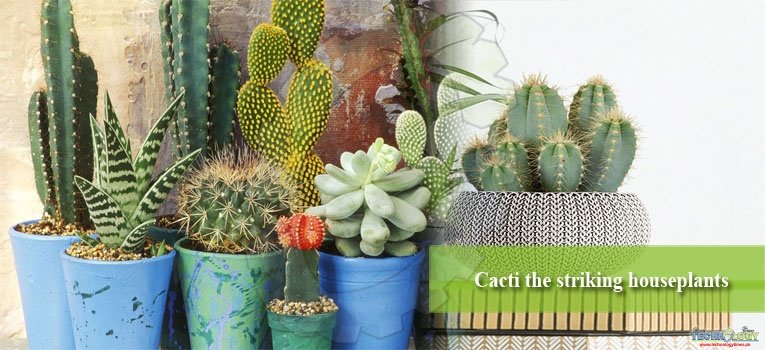Cacti are perhaps the most popular and least understood of all houseplants. Their popularity is easy to appreciate when you remember that hardly any other indoor living thing can be expected to put up with so much neglect and yet outlive its owner.

There are scores of millions of cactus plants in the homes of this country yet in most cases, they are kept as semi-alive, green ornaments which hardly alter throughout their stay.
Division of Cactus family
The cactus family is divided into two groups.
• The desert cacti
• The forest cacti
Desert Cacti: Natural home is the warm semi-desert regions of America. Despite the name of the group very few can exist in sand alone. Nearly, all cacti belong to this group and there are hundreds to choose from. Most types are easily propagated from cuttings. Need very little or no water between mid-autumn and early spring.
Forest Cacti: Natural home is the forest regions of tropical America, where they grow as epiphytes on trees. Only a few varieties are commercially available and most of them can be recognized by their trailing habit and their flattened leaf-like stems. May need some water and feeding during winter months.
Secrets of success for Desert Cacti:
• Temperature: Average warmth from spring to autumn. Keep cool in winter, 50ͦ – 55ͦ F is ideal but no harm will occur at 40ͦ F. Windowsill plants should be brought into the room at night if the weather is very cold and there is no artificial heat. The hairy cacti (Cephalocereus senilis and Espostoa lanata) need a minimum of 60ͦ F in winter.
• Light: Choose the sunniest spot available, especially in winter. In the green house some shading may be necessary in the hottest months.
• Water: Increase watering in spring and in the late spring-late summer period treat as an ordinary house plant by watering thoroughly when the compost begins to dry out.
• Use tepid water. In late summer, give less water and after mid-autumn keep almost dry- just enough water to prevent shriveling.
• Air humidity: Do not mist in summer (exception-Cleistocactus). The main requirement is for fresh air, open windows on hot summer days.
• The main requirement is for fresh air, open windows on hot summer days.
• Repotting: Repot annually when young after that only repot when essential. Transfer in spring into a pot which is only slightly larger than the previous one.
• Propagation: Cuttings of most varieties root easily. Take stem cuttings or offsets in spring or summer. It is vital to let the cuttings dry for a few days (large cuttings for 1-2 weeks) before inserting in peat-based compost. Another propagation method is seed sowing – germination temperature is 70ͦ – 80ͦ F.
Secrets of success for Forest Cacti:
• Temperature: Ideal temperature range is 55ͦ F-70ͦ F. During resting period keep at
50ͦ-55ͦ F.
• Light: Choose a well-lit spot, shaded from direct sunlight for most varieties. Epiphyllum thrives on an east-facing windowsill.
• Water: Increase watering when resting period is over and buds begin to form. Treat as an ordinary house plant when flowers appear and during active growth- water liberally when compost begins to dry out. Use rain water if tap water is very hard.
• Air humidity: Mist the leaves frequently.
• Repotting: Repot annually shortly after flowering has finished. Epiphyllum is an exception.
• Flowering is encouraged by pot-bound conditions so do not repot annually.
• Propagation: Cuttings of most varieties root easily. Take stem cuttings in summer using a terminal leaf pad or stem tip. Allow cutting to dry for a few days before inserting in peat based compost.